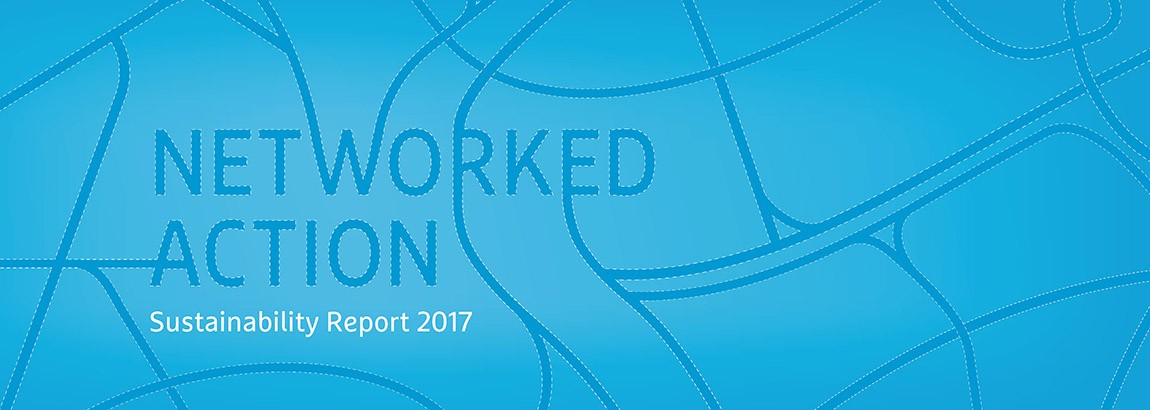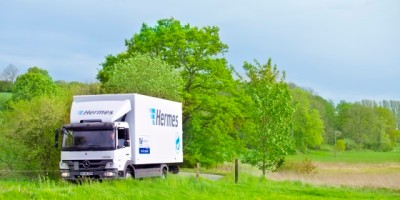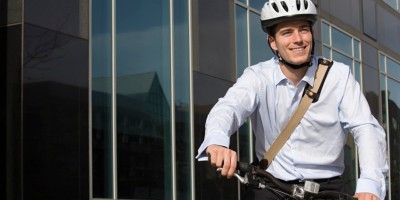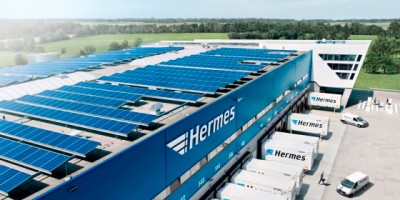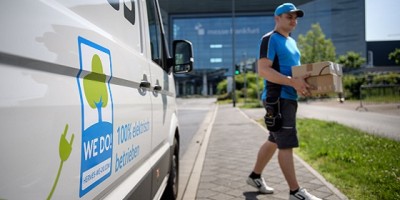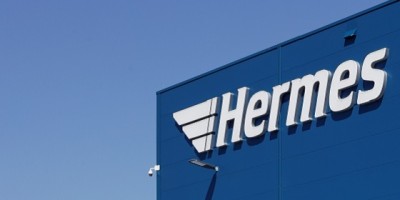Our attitude and approach
Clear climate protection goals for sustainable logistics
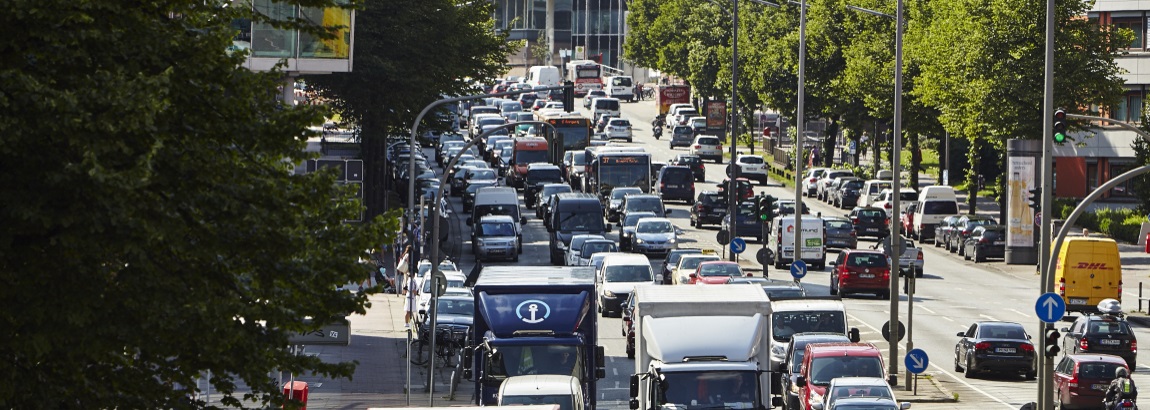
The transport of people and goods generates a significant proportion of global CO2 emissions. Contrary to developments in other sectors, transport-related emissions have increased in recent years and it is becoming apparent that national emission targets for the transport sector in Germany have not been met. The reason for this is a sharp increase in traffic volume - also due to the rapid growth in freight traffic. Logistics volumes will continue to increase, and so the challenge is to make the transport of goods environmentally and above all climate-friendly, even if growth continues. The aim must be to achieve almost decarbonised logistics by 2050. As one of the leading logistics companies in Europe, we are facing up to this challenge.
Limiting global warming to less than two degrees – this is the declared goal of ‘2o Foundation - German CEOs for Climate Protection'. The foundation was established by Dr Michael Otto and is an initiative of CEOs of a number of renowned enterprises. Hermes is also making its contribution to achieving this important goal and is an active member of the foundation. On top of this, we have decided to extend our commitment. As a so-called ‘topic patron’ in the ‘Path to a <2° economy’, Hermes is heading the ‘Traffic’ cluster. This cluster includes a number of companies from a variety of industries and regions who are working together on specific activities and project to cut CO2 emissions. More on the 2° Foundation at https://www.stiftung2grad.de.
A joint climate strategy with the Otto Group
Our parent company, the Otto Group, already adopted a climate strategy back in 2007 that aims to reduce site, transport and mobility-related CO2 emissions of Group companies by 50% by 2020 compared to the base year 2006. In an effort to achieve this savings target, individual companies are implementing their own climate protection measures on a decentralised basis. The Group supports the operational implementation of these activities with the help of measurement and control instruments. In addition to the activities at the Otto Group's 400 locations, measures to reduce CO2 emissions also relate to transport from sourcing countries to the customer as well as business trips and the use of company cars.
Hermes is supporting the Otto Group's climate protection strategy by reducing CO2 emissions in its direct sphere of influence (sites and mobility) for all German Hermes companies by at least 50% by 2020, in line with the Otto Group's overarching climate protection strategy. In the indirect sphere of influence (transport), which is also significantly influenced by our client retailers, we are looking to work together with them to ensure that the Otto Group achieves a total reduction of at least 50% by 2020. Our clearly defined goals in the area of climate protection therefore relate to the scope of our business with Otto Group clients, in which we have greater opportunities for influence and change.
Scope of the Otto Group
Our climate protection objectives result from our affiliation with the Otto Group. This is where we have the greatest influence along the entire value chain and we are working together at all levels to achieve our goals. All Hermes’ own locations and the entire company mobility (business trips and company cars) will be integrated into the objectives. Logistics includes all transport activities that we carry out on behalf of Otto Group companies. Especially in terms of our procurement logistics, i.e. the intercontinental movement of B2B goods flows, the joint approach within the Otto Group is necessary to achieve progress in climate protection. However, we also provide non-Group clients with appropriate solutions to promote climate-friendly logistics. In distribution logistics, – i.e. on the line haul and the final mile of delivery of individual shipments – all measures that have a positive effect on the Otto Group's transports also have the same effect for other customers. Logistic optimisation or fleet modernisation have a direct impact on all contractors, as the same logistical processes and vehicles are used for both the Otto Group and other clients.
Four areas of focus in climate protection
As early as 1996, we anchored environmental protection in our corporate strategy. As a significant proportion of the environmental impact of our business activities lies in CO2 emissions, climate protection is a particular focus for us.
Hermes is therefore looking to achieve its CO2 savings goal in four defined areas of activity: by continually optimising its logistics operations, by upgrading its fleet of vehicles, by exploiting energy efficiency at our sites and by making increasing use of alternative drive systems.
In addition, we will be supporting our customers and clients, employees and partners in cutting their carbon footprint. As part of their 2-man handling service, Hermes Einrichtungs Service for instance is offering shippers complete compensation for all emissions caused during transport. In addition, Hermes Einrichtungs Service has been offsetting the centrally generated CO2 emissions since 2016. This includes all CO2 emissions caused by travelling and it own sites. In 2017, the logistics service provider offset a total of 1,800 tonnes of CO2.
In addition to cutting CO2 emissions, we are also looking to considerably reduce air pollutants (e.g. NOx). Our goal is to ensure emission-free delivery in the inner-city areas of Germany's 80 largest cities by 2025.
In 1999, Hermes introduced a certified environmental management system according to ISO 14001 and implemented it at 46 locations in Germany. The environmental goals and measures set are evaluated annually and reviewed by an accredited certification body. On the basis of the results, ongoing adjustments are made and new goals set in order to achieve continuous improvement in environmental management. Some of the measures are described in the section Climate and Resource Protection at our sites.
The impact of pollutants is felt most strongly in procurement and distribution logistics, i.e. in the final mile and in line hauls. In the area of procurement logistics, we are heavily involved in working groups and initiatives to reduce CO2 emissions. Hermes is a member of the Clean Cargo Working Group, for example. Hermes also has direct opportunities for action in distribution logistics. For instance, we involve our contractual partners, as they are responsible for carrying out much of the transport on our behalf.
By contrast, our sites produce far fewer climate-damaging emissions. We use various options for energy optimisation at the sites we plan and operate ourselves.
Responsibility and ongoing monitoring
Responsibility for implementing our measures to achieve the joint climate protection target lies with the management and is organised on a decentralised basis. Our CO2 emissions are recorded along the logistics chain and evaluated annually. In this way, we check whether our measures contribute to the achievement of objectives or whether we need to readjust.
To check whether we have achieved our climate protection targets, all figures for a calendar year relating to business with the Otto Group are included (Scope: Otto Group business). Decisive for our climate protection targets are carbon emissions which are shown adjusted for volume. They are adjusted using the following units of measure to make them comparable with the base year 2006:
- Sourcing: Weight of transported goods (tonnage)
- Distribution: Shipment volume to the customer and returns
- Sites: Offices: Number of employees and area, Logistics Buildings: Consignment transshipment,
- Mobility: Journey or passenger kilometres
At the end of the 2017 calendar year, volume-adjusted CO2 emissions in the direct and indirect sphere of influence of Hermes Germany, Hermes Einrichtungs Service and Hermes Europe were 40% down on the base year 2006 (scope: Otto Group business). In this way, we are making a significant contribution to halving the Otto Group’s volume-adjusted CO2 emissions by 2020 compared with the base year 2006 (Scope: Otto Group business).
CO2 emission (in tonnes) from HE/HG/HES in relation to Otto Group business (scope: Otto Group business)
The figures are volume-adjusted compared to the base year 2006.
| 2006 (base year) | 2013 | 2014 | 2015 | 2016 | 2017 | 2006 vs. 2017 (reduction) | |
| Sourcing (HG): | 103,728 | 85,868 | 68,639 | 64,079 | 57,360 | 53,319 | 49% |
| Distribution logistics (HG/HES) | 63,957 | 51,986 | 52,605 | 51,561 | 48,120 | 47,993 | 25% |
| Sites (HE/HG/HES) | 12,057 | 9,781 | 9,110 | 8,720 | 7,857 | 6,602 | 45% |
| Mobility (HE/HG/HES) | 1,890 | 1,009 | 1,166 | 1,116 | 1,057 | 1,048 | 45% |
| Total: | 181,632 | 148,644 | 131,520 | 125,476 | 114,394 | 108,962 | 40% |
In order to increase the transparency of our carbon reporting, we also publish the absolute CO2 emissions not adjusted for volume which, however, relate to business with all clients, including those outside the Otto Group. Despite the sharp increase in transport volumes in both distribution logistics and in procurement logistics, the carbon footprint has remained more or less constant since 2013.
CO2 emissions (in tonnes) from HE/HG/HES in relation to all clients.
The values indicate the nonquantity-adjusted absolute CO2 emissions.
| 2013 | 2014 | 2015 | 2016 | 2017 | |
| Sourcing (HG): | 149,960 | 134,199 | 103,738 | 102,661 | 102,693 |
| Distribution logistics (HG/HES) | 112,396 | 113,906 | 120,436 | 128,772 | 142,620 |
| Sites (HE/HG/HES) | 10,950 | 13,397 | 13,824 | 14,260 | 12,776 |
| Total (without mobility) | 273,306 | 261,502 | 237,998 | 245,693 | 258,090 |
